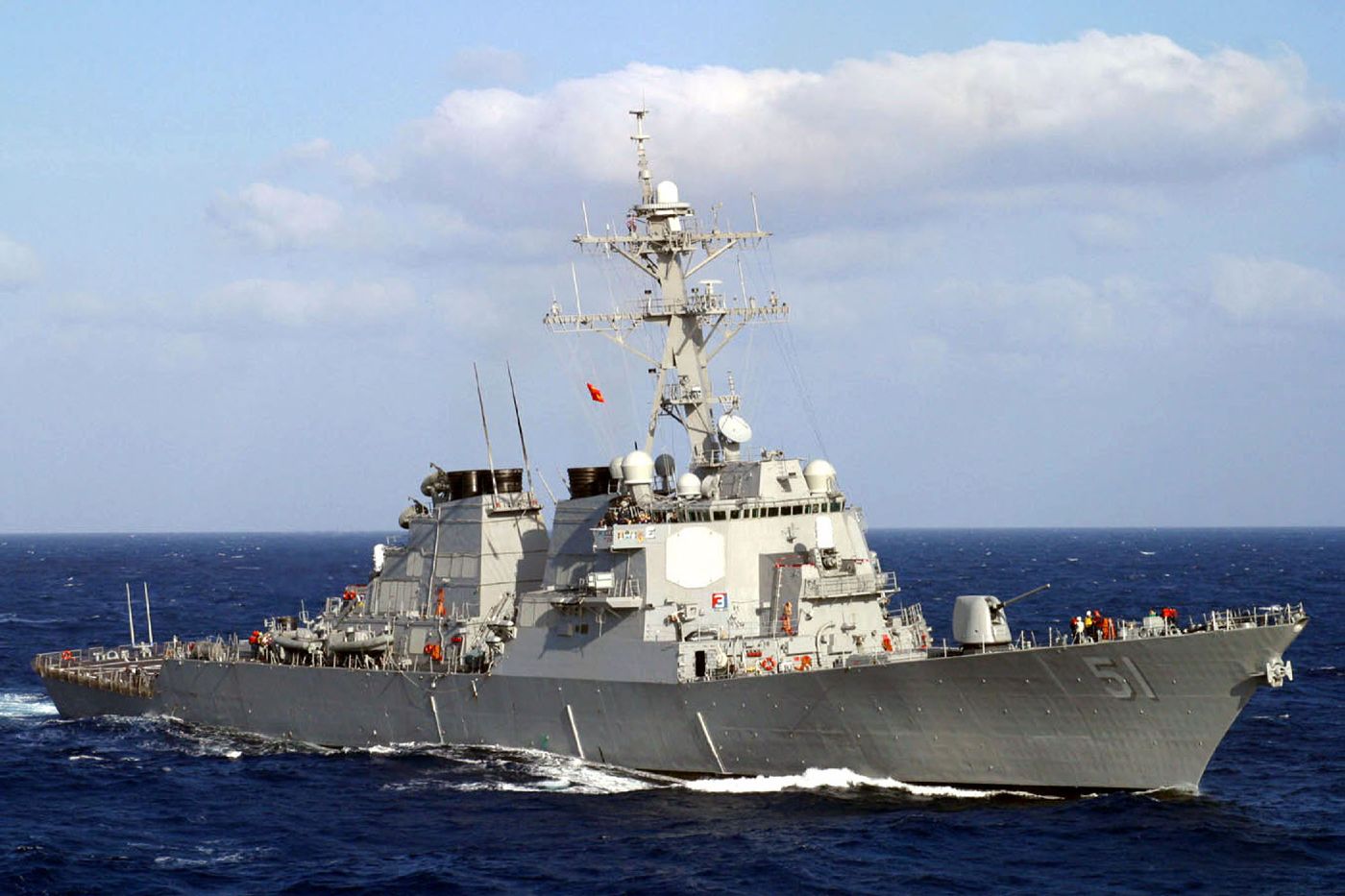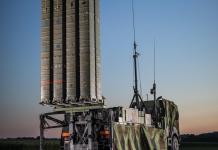In modern warfare, every military superpower is locked in a covert arms race to gain an edge through artificial intelligence. According to a report from UC Berkeley researchers, China may be secretly amassing a potent new weapon: AI training data meticulously labeling critical systems on U.S. and allied warships.
A recent report by the Berkeley Risk and Security Lab (BRSL) at the University of California, Berkeley, titled ‘Open-Source Assessments of AI Capabilities,’ claims that China is using open-source intelligence (OSINT) images of U.S. warships to develop AI training datasets. The report also demonstrates how OSINT tools can be leveraged to assess and understand key military capabilities through AI technology.
The report exposes the peculiar ‘Zhousidun’ dataset, which includes over 600 images exhaustively detailing the inner workings of American Arleigh Burke-class destroyers and other allied naval vessels.
Culled from public satellite imagery and media sources, this highly specialized catalog seems too specialized for mere academic interests. By scrutinizing this data, China could be feverishly training computer vision algorithms to automatically identify, track, and potentially neutralize opponents’ maritime forces.
Research Paper By BRSL
The Research paper by BRSL shows an open-source methodology for analyzing military AI models through a detailed examination of the ‘Zhousidun’ – a Chinese-originated dataset that exhaustively labels critical components on American and Allied destroyers.
It is unclear whether this database was developed by a university researcher interested in testing new tools for ship detection, a navy computer scientist as part of a military project, or an undergraduate student aiming to impress potential employers in the defense sector.
BRSL suggests that “due to the targeted, military nature of the dataset and the likely academic origins of the account sharing it, it is likely that this dataset was accidentally published.”
Regardless of its provenance, BRSL deftly reverse-engineered this data into a cutting-edge computer vision model replicating Zhousidun’s extraordinary object detection capabilities. In doing so, they revealed how open-source tools can penetrate even the murkiest clouds of military AI secrecy.
What Is The Zhousidun Dataset?
In August 2023, researchers at the Berkeley Risk and Security Lab discovered a dataset of Chinese origin named ‘Zhousidun’ or ‘Zeus’s Shield.’ This dataset, likely shared by ShanghaiTech University, was made publicly available on ‘Roboflow,’ a platform for sharing datasets and training machine learning models.
Zhousidun contained 608 tightly focused images clinically deconstructing the anatomy of America’s fearsome Arleigh Burke-class destroyers and other allied naval titans. Rather than capturing entire vessel profiles, these sinister images obsessively zoomed in on the DDGs’ bleeding-edge Aegis combat systems using both ground-based and satellite reconnaissance.
The dataset’s hyperfocus on the Burkes seemed no coincidence – these intimidating ships project U.S. naval dominance across the Indo-Pacific. Yet conventional academic studies pursue more generalized ‘whole ship’ detection, not invasive scans of classified military subsystems. Some images bore circulated media watermarks and Google’s Earth-mapping emblems, hinting at Zhousidun’s open-source OSINT pedigree.
Integration Of AI Into Military Capabilities
The integration of artificial intelligence (AI) into military capabilities has become standard practice for major military powers worldwide. Understanding how these AI models operate is crucial for maintaining strategic advantages and ensuring security.
As AI research democratizes with breakneck speed, undergraduate hobbyists may soon outpace state-level programs mired in bureaucracy. China is poised to weaponize academia through centralized control over universities conscripted into its military-industrial complex.
The BRSL report demonstrates how open-source intelligence tools can unmask strategic AI capabilities shrouded in obscurity. With clever AI reconstructions of classified military assets now possible, the technological buffers protecting national secrets are rapidly eroding.
Assessing Risks: OSINT Tools With AI
So, what potential risks come with using OSINT tools with AI technology to assess key military capabilities in the Indo-Pacific region? We explored this with experts to delve deeper.
“It is only a small fraction of how China and others are leveraging OSINT,” said Vivek Vaidyanathan, a government servant with an authority in Policy & Tech Governance with expertise in OSINT, 5G, AI, and Cybersecurity.
Open-source intelligence (OSINT) is just one piece of the intelligence puzzle. There are various forms of intelligence, including human intelligence (HUMINT) and technical intelligence (TECHINT). TECHINT encompasses assets like satellites, Air Force planes taking high-resolution photos, UAVs, and ocean sensors detecting activity.
The internet offers a mix of structured data (documents) and unstructured data (images, videos, social media). Patterns can be discerned from these vast data sets using sophisticated tools involving graph theory, tensor flow, and advanced mathematics.
When these patterns are combined with HUMINT and TECHINT, a comprehensive and composite picture emerges, enhancing intelligence efforts. OSINT cannot be used in isolation; it must be integrated with other intelligence forms to be truly effective.
AI in the military is just a small subset. As a military commander, the focus is more on understanding operational efficiency and decision-making processes. Key considerations include how health networks are governed, ethical safeguards in autonomous weapons, and overall AI preparedness. However, the primary focus is on operational capability and enforcing foreign policy through military actions.
For instance, a Western theater commander stationed in Chengdu, China, and facing India manages a spectrum of projects spanning from road construction to aircraft maintenance.
By aggregating data from contract documents, satellite images, public speeches, and budget reports, a comprehensive intelligence overview can be created to assess how the commander stationed in Chengdu aligns their forces concerning India, explained Vivek Vaidyanathan while talking to EurAsian Times.
The risk associated with this practice, particularly in the context of the Indo-Pacific region, is significant.
In essence, the South China Sea is crucial for China’s energy security due to its oil dependency. Despite ongoing efforts to build a land route from Central Asian Countries, China is still dependent on its sea lanes through the South China Sea for its energy requirements.
Hence, China’s aggressive stance in the South China Sea is motivated by its vulnerability in this region, evident by the frequent presence of the US Seventh Fleet conducting exercises, along with the active involvement of allies like the Philippines and Vietnam. Meanwhile, countries like India, Indonesia, and Malaysia also engage in naval exercises in the region to safeguard their interests.
China aims to assert dominance over the South China Sea, which is contested by a coalition comprising the US, Australia, New Zealand, Malaysia, Indonesia, and the Philippines. However, monitoring such a vast area is challenging, even with repeated aerial sorties, necessitating the use of satellite imagery. While establishing a satellite constellation takes time, utilizing available open-source images and algorithms provides some insight into activities in the region.
This approach enhances the effectiveness of surveillance and enables better targeting of assets such as pipelines and ships or any other object, said Vaidyanathan.

AI In Ship Detection
The rapid expansion of commercial satellite imagery has sparked a renaissance in computer vision research aimed at identifying objects on the high seas. By training artificial intelligence models on this vast array of data, scientists can equip machines with unparalleled maritime surveillance capabilities, enabling them to automatically detect, identify, and track vessels with superhuman precision and vigilance.
These AI maritime capabilities unlock a multitude of applications. Environmental stewards can use intelligent monitoring to patrol for illegal fishing fleets depleting ocean resources or to analyze coastal changes, such as the degradation of coral reefs.
Security forces, on the other hand, can leverage this comprehensive ocean surveillance to track ships violating sanctions and to map the locations of potential naval threats.
However, detecting concealed or camouflaged vessels amidst the oceans’ churning opacity remains a formidable challenge. Conventional detection models struggle to accurately differentiate ship types due to deep learning’s limited ability to recognize unique vessel characteristics.
The BRSL research utilized a widely-used, near-state-of-the-art object detection model to assess the effectiveness of a model trained on the Zhousidun dataset in detecting Aegis combat systems in real-world scenarios. BRSL conducted external validation of this model on synthetic data generated from a custom-built 3D scene of an Arleigh Burke-class destroyer.
The research demonstrated the limitations of the Zhousidun dataset and, by extension, datasets sourced from the public internet. BRSL discussed how such models might be applied in the context of Zhousidun’s focus on U.S. and allied naval vessels.

The Open-Source Insurrection
Traditionally, exquisite military technologies were developed in isolation and kept secret, with the expertise and talent needed to advance these technologies closely guarded, making external replication nearly impossible. However, the field of artificial intelligence represents a significant departure from this norm, as AI research and development has been widely democratized.
Pioneering AI research is typically not reserved for private profit but is instead rapidly released into the public domain through publications and accompanying code releases. The tools, techniques, and procedures to replicate and expand these capabilities are readily accessible, and the skills required to use them can be learned in a day.
When datasets from adversaries or competitors are accidentally revealed, they provide an opportunity for in-depth, targeted exploration of the capabilities of models trained on those datasets and the limitations of the adversaries’ collection capabilities.
Additionally, advances in simulation and modeling enable the meaningful replication of data, offering a more comprehensive testing distribution than the original dataset alone. In the absence of a dataset, simulation, and modeling can create an entirely new testing dataset.
The rapid pace of innovation in AI means that the tools and technologies available to undergraduates in their introductory deep-learning courses are often more advanced than those used by the world’s top militaries. This contrasts sharply with the traditional situation where militaries possess capabilities far beyond those accessible to the general public.
Conclusion
China’s ‘Blue Dragon’ Strategy aims to extend its influence and strategic presence across significant water and land territories. The strategy pertains to three major bodies of water: the East China Sea, the South China Sea, and the Indian Ocean. This endeavor counters US initiatives and bolsters Beijing’s authority, posing a threat to regional security.
Furthermore, the Blue Dragon strategy challenges India’s long-standing stance of non-alignment, potentially leading to increased isolation for New Delhi.
At the same time, China is well-versed in integrating academia with military efforts. Many academic AI projects in China are funded by the National Natural Science Foundation and National Key R&D Programs, which analysts believe also receive funding from the PLA.
In this burgeoning AI battlefield, the advantage goes to the agile and the open. Nations speeding innovation into the public arena could leapfrog over rivals still clutching outmoded secrecy. As China tightens its grip over vital maritime chokepoints, its AI gambit could ignite a harrowing new Pacific frontline.
- Shubhangi Palve is a defense and aerospace journalist. Before joining the EurAsian Times, she worked for E.T. Prime. In this capacity, she focused on covering defense strategies and the defense sector from a financial perspective. She offers over 15 years of extensive experience in the media industry, spanning print, electronic, and online domains.
- Contact the author at shubhapalve (at) gmail (dot) com.




